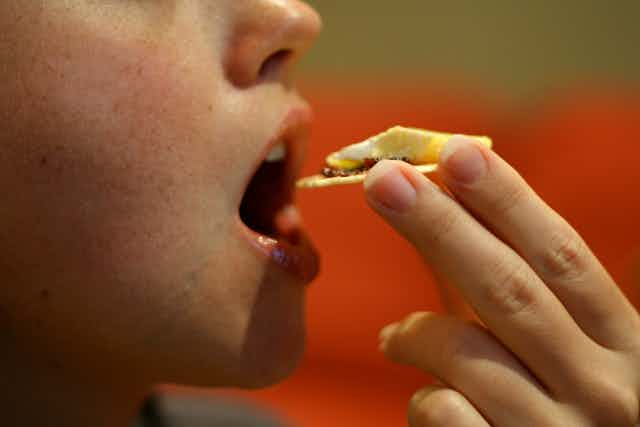Australia has some of the world’s most ancient soils, many of which grow delicious produce. In this series, “The good earth”, soil scientist Robert Edis profiles some of those soils and the flavours they bring.
Milk is very strongly and immediately influenced by what the milk producer eats. Those who remember fresh fresh cows’ milk will testify to the seasonality of milk flavour, the way it changes with pasture composition.
Travelling abroad, as I am now, I find it easy enough to get good espresso; beans travel well and you can always purify water. What always disappoints is the milk. Milk quality, and therefore cheese quality, is unambiguously dependent on pasture quality. And guess what: pasture quality is dependent on soil.

The geology of King Island, central to the story of agriculture, is dominated by the very old (Precambrian, at more than 541 million years old) and the very young (less than around 10,000 years old). The old rocks, many of them igneous, are the parent material for the best pasture soils on the island – Yellow Kurosols.
The green parts of the island - you can take a look at them on Google Earth - correspond well to the distribution of these soils on Precambrian rocks. These soils contain more clay and organic matter for water and nutrient storage than the newer dunes.
Kurosols are made up of contrasting textures, with a fertile loam topsoil abrupty overlaying an acidic clay subsoil. The acidity creates problems in the subsoil, but it also helps give suitable soil structure, and therefore moderate drainage (compared to say Sodosols).
The rainfall is around 900 mm here, so drainage and erosion are issues. Kurosols are not great soils, but they are much better than most soils that occur in this environment. The topsoil here is crumbly and well drained, with a natural capacity to build organic matter content. The subsoil is reasonably deep, with OK drainage, and it stores water well.

The yellow colour indicates prolonged dampness – it’s a bit wet for cropping. But pasture plants well adapted to acidic subsoil conditions (pH less than 5.3) thrive here. This Yellow Kurosol has allowed pastoralists to develop dairy farms and take advantage of the year-round rainfall and cool conditions to make premium cheeses.
There are of course losers in all this. Forest was cleared to make way for cows, and the loss of habitat has been profound, particularly of large, old, hollowed trees. With increased pasture, the population of Bennett’s Wallaby on King Island has boomed – in 2008, over 500,000 animals foraged on just 66,413 hectares of pasture. Farmers want that pasture for their cows, so the wallabies have been “controlled”. Alas, even the tender craft of making cheese is poisoned with brutality.
Cheese is a great integrator of Planet Earth, and everything has to be just right. The flavour and texture components are drawn from the hands of the cheese-maker and the micro-organisms they garden, the cattle and the grass they eat, the atmosphere and water these all share, and on King Island, a Yellow Kurosol. It’s a biome on a biscuit!


